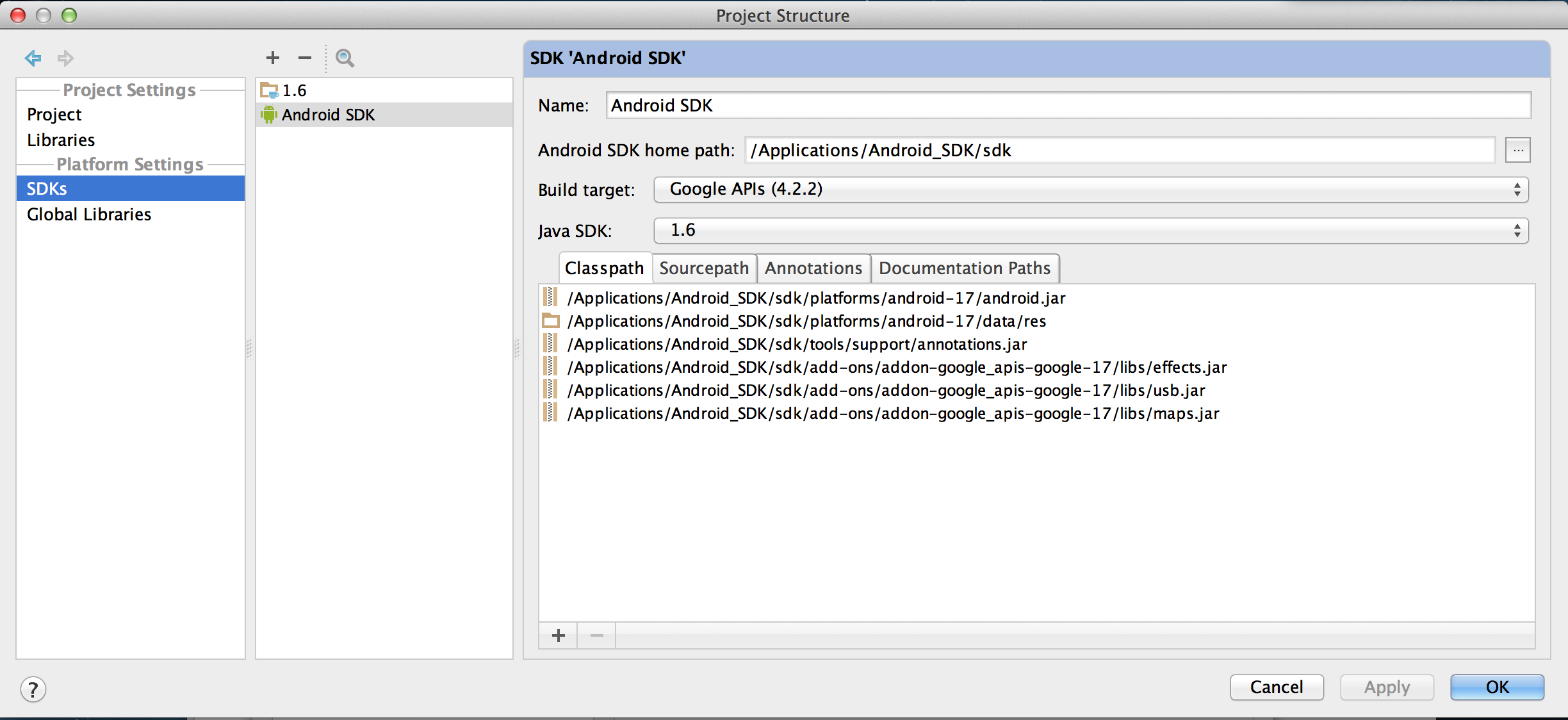Android Studio Sdk For Mac
To start the SDK Manager in Visual Studio for Mac, click Tools > SDK Manager. The Android SDK Manager opens in the Preferences window, which contains three tabs, Platforms, Tools, and Locations. The tabs of the Android SDK Manager are described in the following sections. The Android SDK (software development kit), which comes with the Android Studio package, does not include everything you need to start developing Android apps. The SDK itself is a utility used to separate your tools, platforms and components into packages by using the Android SDK Manager.
To make this switch, click the gear icon in the lower right-hand corner and select Repository > Google (Unsupported): When the Google repository is selected, additional packages may appear in the Platforms tab that were not available previously. (In the above screenshot, Android SDK Platform 28 was added by switching to the Google repository.) Keep in mind that use of the Google repository is unsupported and is therefore not recommended for everyday development. To switch back to the supported repository of platforms and tools, click Microsoft (Recommended). This restores the list of packages and tools to the default selection. Requirements To use the Xamarin Android SDK Manager, you will need the following: • Visual Studio for Mac 7.5 (or later). The Xamarin Android SDK Manager also requires the Java Development Kit (which is automatically installed with Xamarin.Android).
We expect Office for Mac 2019 to be the same price as the current Office for Mac 2016, so we'd recommend waiting a week or so for the new version to come out. If you can't wait, you can get Office. Install Office for Mac now. Office 365 customers get the new Office for Mac first. You’ll have Office applications on your Mac or PC, apps on tablets and smartphones for when you're on the go, and Office Online on the web for everywhere in between. Next office for mac.
But you're not quite finished! The tools will be installed into the application data folder. On Windows it's in Windows users YourUserName AppData Local Android and on a Mac or Linux it's in.Android (notice the dot!) in your home folder. Create a symbolic link () for both tools folders in the Android folder you created earlier. This will help get them into your PATH and make life a lot easier. Setting your PATH.
3.2 You may not use this SDK to develop applications for other platforms (including non-compatible implementations of Android) or to develop another SDK. You are of course free to develop applications for other platforms, including non-compatible implementations of Android, provided that this SDK is not used for that purpose. 3.3 You agree that Google or third parties own all legal right, title and interest in and to the SDK, including any Intellectual Property Rights that subsist in the SDK. 'Intellectual Property Rights' means any and all rights under patent law, copyright law, trade secret law, trademark law, and any and all other proprietary rights. Google reserves all rights not expressly granted to you. 3.  4 You may not use the SDK for any purpose not expressly permitted by the License Agreement.
4 You may not use the SDK for any purpose not expressly permitted by the License Agreement.

• Follow the setup wizard to install Android Studio and any necessary SDK tools. On some Windows systems, the launcher script does not find where Java is installed. If you encounter this problem, you need to set an environment variable indicating the correct location. Select Start menu > Computer > System Properties > Advanced System Properties. Then open Advanced tab > Environment Variables and add a new system variable JAVA_HOME that points to your JDK folder, for example C: Program Files Java jdk1.7.0_21. The individual tools and other SDK packages are saved outside the Android Studio application directory.